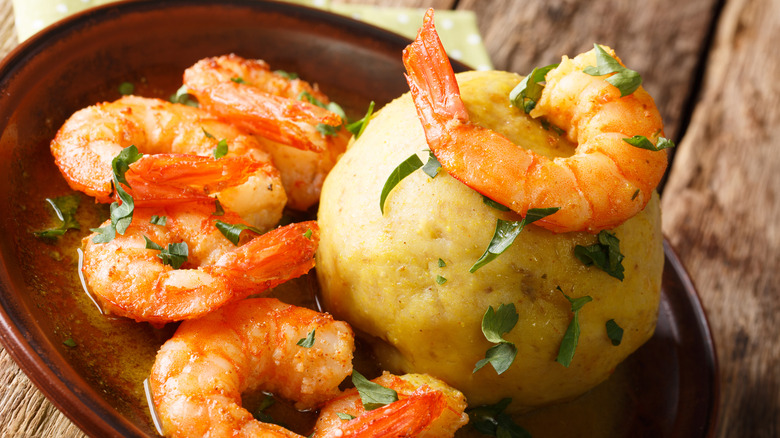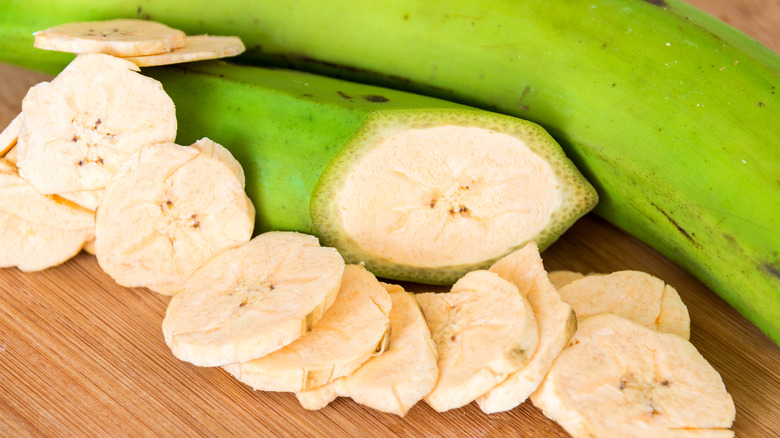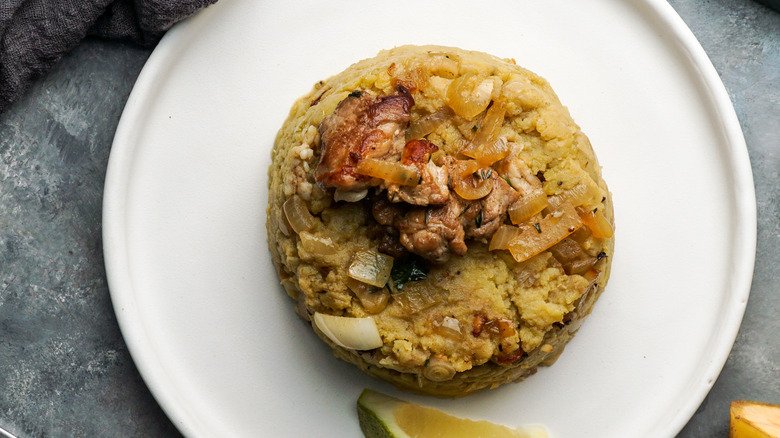Mofongo: Puerto Rico's Classic Plantain Dish
If you've spent any time in Puerto Rico or are well-versed in Puerto Rican food, then you may have tried mofongo. This classic Puerto Rican staple offers a symphony of flavors and textures that are emblematic of the Caribbean islands. According to Smithsonian Magazine, while mofongo is considered to be a traditional Puerto Rican dish, the inspiration and technique may have traveled across the sea when enslaved West Africans were brought to the Caribbean. The traditional West African dish that may have pre-dated mofongo was called "fufu," which was constructed by mashing plantains and cassava yams with a mortar and pestle. After a while these flavors and techniques were blended with Spanish flavors and the new creation was mofongo. Smithsonian Magazine also notes that the word "mofongo" may be derived from an Angolan Kikongo word "mfwenge-mfwenge" which translates roughly to, "a great amount of anything at all." This translation makes a lot of sense when you consider what mofongo is made.
Ingredients and Technique
While there are variations of mofongo like this simple shrimp mofongo recipe, the base for the dish is the same. According to The Spruce Eats, the basic recipe for mofongo contains green plantains, garlic oil, and fried pork rinds, known as chicharrónes. What makes the dish special, however, is how it's assembled.
Since green plantains have a much tougher texture than sweet plantains, it's important to get the cooking technique just right when cooking the green plantains for mofongo. To make the plantains soft you have to fry them in oil, but you want to be sure to fry them gently, so they don't burn and create a hard and dry texture in the dish, notes The New York Times. Once the plantains are fried you'll begin to assemble the dish inside of a pilón — which is a small wooden bowl similar to a mortar and pestle — and smash everything down together. Layers of fried plantains, chopped garlic in oil and the chicharrón are combined in the pilón until it's filled and compacted down tightly. Then the dish is gently removed from the pilón and served on a plate in a nice mound-shape.
Eating Mofongo
Once the mofongo hits the plate it can be topped with garnishes like cilantro, or onion and can also be served with a sauce, notes Chef Zee Cooks. The dish can also be served with salsa de tomate, notes Saveur. Mofongo can be eaten as a side dish, or as the main entrée depending on how you prepare it and what you accompany it with on the plate, according to The Spruce Eats. Chef Zee Cooks notes that you can add any kind of protein you like into your dish including but not limited to beef, other preparations of pork or any seafood you might have on hand. It's fair to say that any kind of meat or protein served on the islands would be delicious in mofongo since the word translates loosely to, "a great amount of anything at all." Rice and beans can also be served alongside mofongo (per Chef Zee Cooks). Once you've got the base of plantains, garlic and pork rinds you're all set to get creative. The Spruce Eats also explains that mofongo is best served right away, but if you plan to save it in the refrigerator, don't plan to keep it in there for longer than three days in an airtight container. Now you can make and enjoy this island classic at home.


